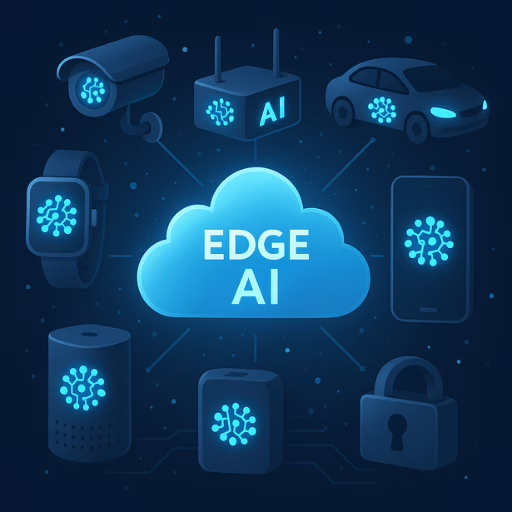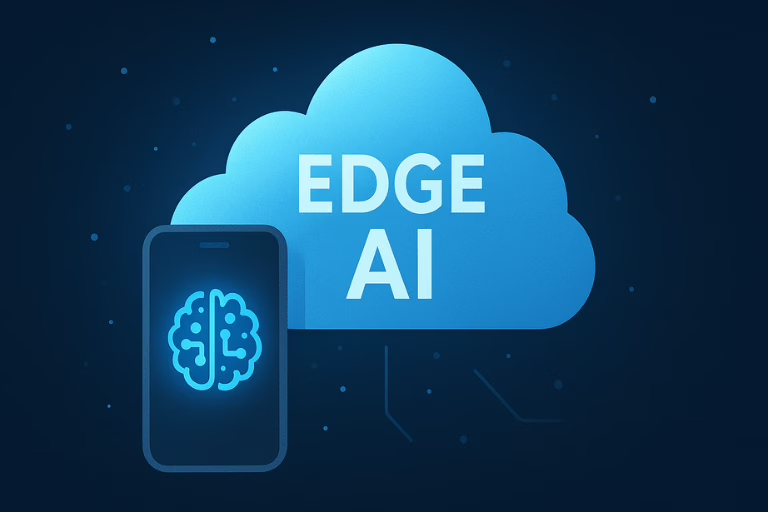What is “Artificial Intelligence at the Edge”?
When you hear Artificial Intelligence at the Edge, picture smart software (AI) running right on the device in your hand or in your building — a phone, camera, smart speaker, factory robot, even a traffic light.
Instead of sending every photo, video, or sensor reading up to a far-away cloud server, the device does the thinking by itself and only sends small results (if anything) over the internet.
Why bother? What are the benefits of Artificial Intelligence at Edge?
- It’s Fast
- No round-trip to the cloud means answers in milliseconds. Great for self-driving cars or an AR game that can’t lag.
- It Saves Data
- A security camera can decide “No intruder here” and skip uploading hours of empty footage, slashing bandwidth costs.
- It Protects Privacy
- Health data from a smart watch can stay on your wrist instead of living on someone else’s server.
- It Keeps Working When Wi-Fi Drops
- A farm sensor or an offshore wind turbine can still react and log problems even with spotty connections.
How Do Devices Get So Smart?
- Tiny but Mighty Chips – New phone and micro-controller chips now include mini “neural engines” that crunch AI math while sipping power.
- Lightweight AI Models Engineers shrink big cloud models by Quantizing (taking 32-bit numbers down to 8-bit) Pruning (removing parts that barely help accuracy)
- Friendly Toolkits Free tools like TensorFlow Lite, ONNX Runtime, or Edge Impulse walk you from data collection to on-device deployment without deep math skills.
Real-Life Examples of Edge AI We Already Use

| Where | What Edge AI Does |
|---|---|
| Phones | Auto-focuses cameras, transcribes speech, unlocks with your face |
| Smart homes | Detects glass breaking or smoke and sends an alert in seconds |
| Retail stores | Counts foot traffic and restocks shelves faster |
| Wearables | Flags abnormal heart rhythms immediately |
| Cars | Reads road signs and watches blind spots without waiting for the internet |
How Can We Try Artificial Intelligence at the Edge ?
- Grab an easy dev board
- Budget: Raspberry Pi 5
- Mid-range: NVIDIA Jetson Orin Nano
- Ultra-low-power: Arduino Nicla Vision
- Collect a small data set
- We can use our own mobile phones to collect some images or use free datasets which are already available in websites like Kaggle.
- Train in the cloud
- You might not have enough computational power but you can use cloud Notebooks like Google Colab.
- Shrink the model
- you can use built-in quantize/prune buttons in tools.
- Flash it to the board
Conclusion
Artificial Intelligence at the Edge moves the brains of tech gadgets from distant data centers to the gadgets themselves. The result? Faster reactions, lower costs, stronger privacy, and products that keep working even when the network doesn’t. As chips keep improving, expect more everyday objects — from doorbells to tractors — to get their own pocket-sized AI smarts.



One thought on “Artificial Intelligence at the Edge”
Comments are closed.